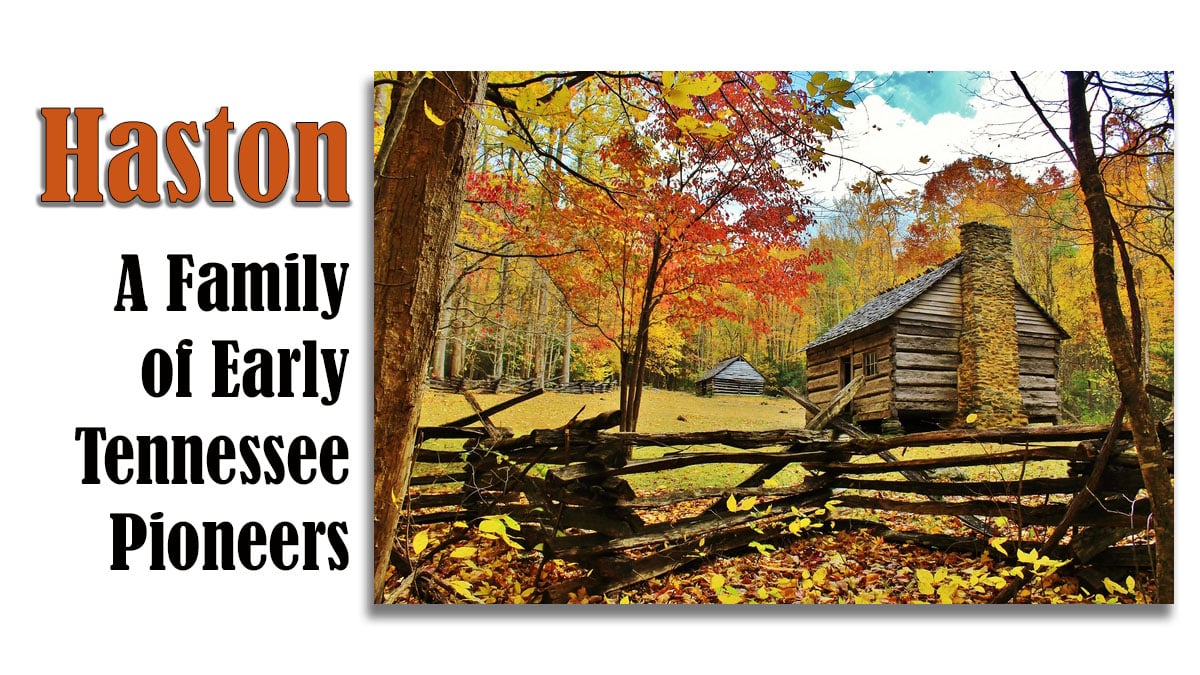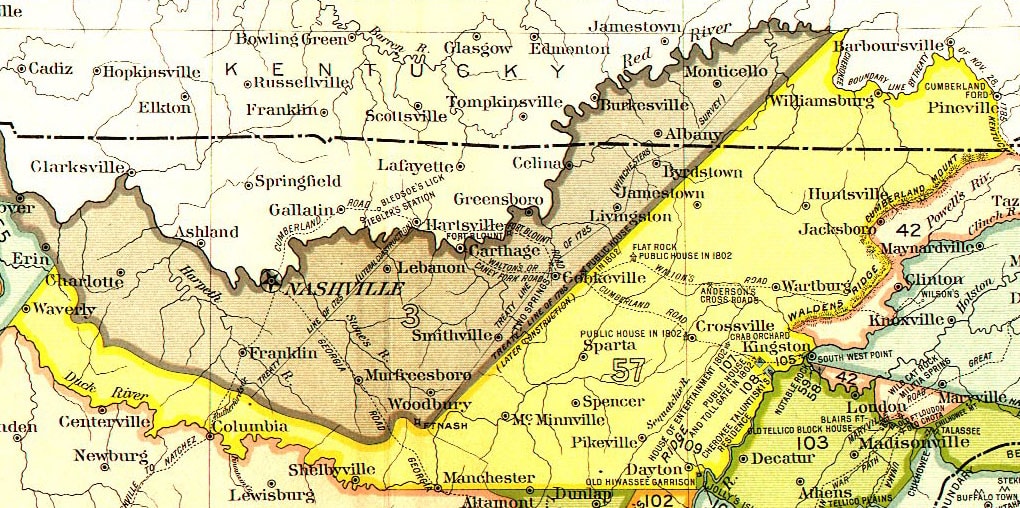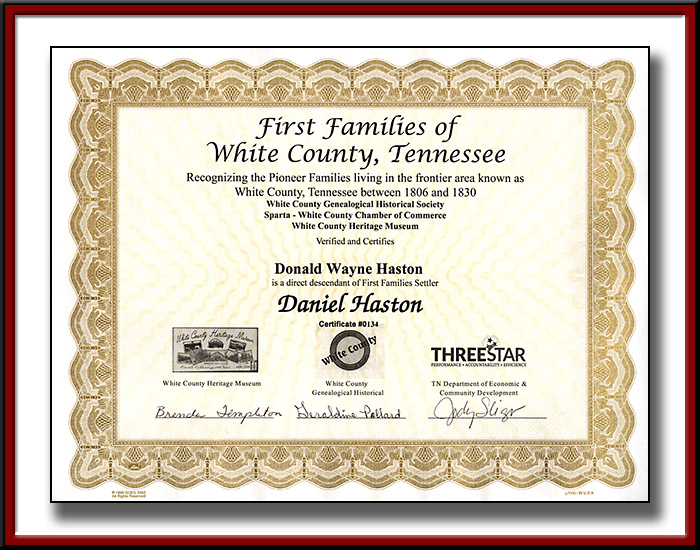The Daniel Haston Family - Pioneer Tennessee Settlers
More Than a Decade Before Tennessee Became a State

Daniel Haston was truly an American pioneer in the Shenandoah Valley of Virginia, East Tennessee, but even more so in what became Middle Tennessee--White County in particular.
Wayne Haston
Daniel Haston and his family were American pioneers, in the truest sense of the word. We can’t begin to imagine how tough it was to be a pioneer in the wild wilderness of western North Carolina (now eastern Tennessee), and later the Cherokee Indian hunting land of the Caney Fork River valley in the decades just before and after 1800.
Daniel’s Hiestand (Henry Hiestand) family was among the earliest European settlers in the Shenandoah Valley of northern Virginia. And, like his father, Daniel was driven by a pioneer spirit. In the early 1780’s, Daniel and his older brother Abraham settled near the town of Jonesborough (the oldest town in Tennessee), when it was still within the western wilderness of North Carolina. After about ten years there in Washington County, Daniel moved his family westward to the outskirts of the little village of Knoxville when there were just a few houses and stores in that pioneer settlement. That was only two or three years after Knoxville was founded. The little town that grew up around General James White’s Fort was a “Dodge City” kind of settlement–with a jail but no church building in its earliest years. Daniel’s family was living “south of the Holston (River), opposite Knoxville” when Tennessee became the 16th state in the USA on June 1, 1796. The Daniel Haston family was truly one of the “first families of Tennessee.”

Join First Families of Tennessee

If you can trace your lineage back to our Daniel Haston who was living in “Tennessee” before it became Tennessee, and prove it with documentation, you qualify to join the First Families of Tennessee.
The Third and Fourth Treaties of Tellico (between the United States and the Cherokee Indians), signed on October 25 and October 27, 1805, ceded to the United States the area between the Cumberland and Duck Rivers in what is now Middle Tennessee. So, prior to that time the territory west of the Cumberland Mountain Range where White and Van Buren Counties of Tennessee are now located belonged to the Cherokee.
Daniel Haston probably heard talk around Knoxville (then the capital of Tennessee) of a near-future treaty with the Cherokee Indians that would cede much of what we know as Middle Tennessee to the United States. Daniel probably thought it wise to make his move to get decent land in the wilderness west of the Cumberland Plateau before greedy land speculators gobbled up all of the prime land. So, even before the October 1805 Treaties of Tellico were signed, Daniel and his family were squatters at the head of the Big Spring Branch of Cane Creek, a few hundred yards before the creek emptied into the Caney Fork River of the trans-Cumberland Plateau wilderness, prime Cherokee, Shawnee, and Chickasaw Indian hunting territory at that time and for centuries earlier.
The yellow (57) section was ceded to the United States by the October 25, 1805 Tellico Treaty.

When the land became available for purchase, Daniel and some of his family and friends who moved with him could make preemption claims, based on occupant rights. These preemption occupant rights rewarded the former squatters for being there to help clear the way for white settlers who soon followed them.
When a petition was circulated in the summer of 1806 to create White County, TN–Daniel’s name was added to that petition, as well as three others in his Big Spring Branch settlement of Haston family members and some of their friends. They were some of the founders of White County, TN. And some of Daniel’s family members were founders of Van Buren County, TN in 1840.

Join First Families of White County
If you can document your genealogical connection to Daniel Haston of White County, TN, you can join the First Families of White County, TN.
Some of Daniel’s children and grandchildren later followed their own pioneering dreams and moved west in pursuit of land, more land, good land, good land-cheap. In many cases, wherever they went many of them were some of the first white settlers–in Missouri, Arkansas, Texas, California, Washington state, and elsewhere.
If you enjoyed this article, please share it with others who might be interested.

